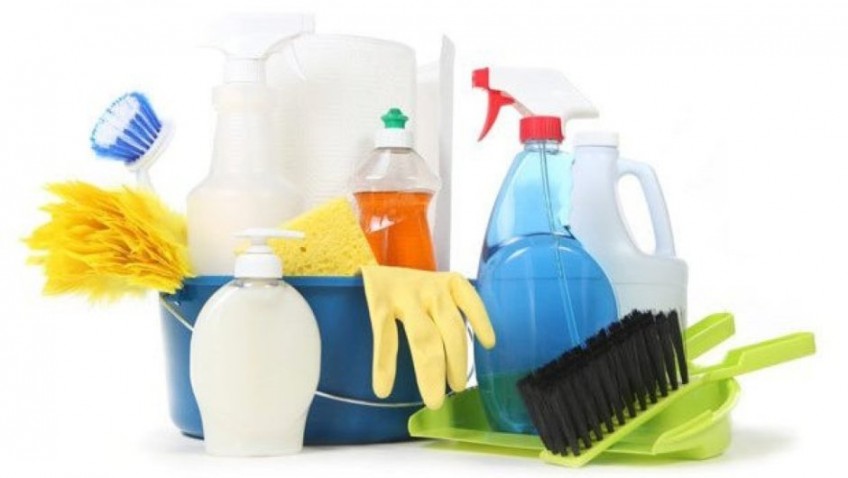Is your house making you sick? Don’t be surprised if the answer is yes. Toxins, pesticides, gases, mites, and moulds are everywhere, and the more you’re exposed to them, the greater your risk for developing the health problems they can cause.
The air in your house could be making you ill: From drying washing to using a gas cooker, 15 million homes are affected by Toxic Home Syndrome – which increases the risk of heart disease and cancer
- Toxic Home Syndrome is where a person’s health deteriorates because of the air in their home – increasing the risk of cancer and heart disease
- Air inside contains more than 900 potentially harmful chemicals
- Mould spores, pollen, radon, carbon monoxide and dander are to blame
- Experts warn people must ensure their homes are properly ventilated
This often results in a group of symptoms such as eye, nose, and throat irritation, stuffiness, “spaciness,” and a rash , caused by what is also known as “sick building syndrome,” “These symptoms come and go fairly quickly — you may notice them within an hour or two of entering a building but also notice that they will be gone within an hour or two of leaving a building. There is no objective test that measures these symptoms, so it’s more a matter of paying attention to the symptoms and trying to pinpoint when you have them and where you are when they occur.
In severe cases, the effects of environmental hazards may not be immediately apparent. Exposure to radon, for example, can lead to lung cancer, but it may be years before that happens. With building-associated illness, such as sinusitis, allergies, asthma — can ensue.
Air pollution
Air pollution inside the home is putting people at risk of developing heart disease, cancer and breathing problems, experts have today warned.
Toxic Home Syndrome, which affects around 15.3 million houses in the UK, is where a person’s health deteriorates because of the air circulating in their home.
Scientists have warned simple day-today tasks, such as doing the washing or cooking dinner, could be putting families at risk of cardiovascular disease, lung cancer and asthma.
Air circulating inside contains more than 900 chemicals, particles and biological materials with potential health effects.
Mould spores, pollen, radon, carbon monoxide and dander all lurk within homes, seeping through cracks in walls and floorboards, brought in on clothing or produced by wood burners, gas hobs and detergents used in cleaning.
10 Tips to remove allergens
The temperature is rising and with it our will to go out exploring in the spring air. Unfortunately, allergens are outside too and enter into our homes and lungs invisibly. Dust, pollen and pet dander can spread quickly and require vigilant removal to be kept under control. We have been sent these top ten tips by cleaning product manufacturers VAX.
1: Nip build-up in the bud The best way to combat allergens in the home is to clean regularly. For sufferers of respiratory allergies, cleaning itself can make you feel poorly, disturbing the dust in our homes. This can be off-putting but if ignored will only get worse. Clean often to make it easier on your allergies and grab a dust-mask if all else fails.
2: Keep windows closed at peak times for pollen Opening windows is good for our homes but at the wrong times can expose us to pollen. As well as observing the pollen count each day of the year, be mindful of how it changes from morning to night. Keep windows and entrances closed as much as possible between the peak pollen times of 8 – 10am and 5 – 7 pm to shut out irritants, but ensure that windows are opened at other times to ventilate well against other toxins.
3: Fight the mites Dust mites love our home almost as much as we do, flourishing in warm, humid rooms like the bedroom and kitchen. Left undisturbed, this tiny mite will produce up to 2,000 particles of waste during its 10-week life cycle, causing havoc to sufferers of asthma and rhinitis. Wash fabrics on a high heat, replace old linens and vacuum regularly to reduce their numbers.
4: Deal with the damp Excess moisture can occur in a home for many reasons including leaky pipes, badly sealed windows, poor ventilation, etc. As well as having a negative effect on the immune system overall, damp is bad for people suffering from asthma and allergies. Dust mites, however, thrive on humidity. Always fix these issues as quickly as possible.
5: Use a vacuum cleaner with a HEPA filter Vacuum cleaners with high-efficiency particulate air (HEPA) filters, trap in allergens. They are also particularly good at picking up dust mite waste, pollen, pet dander and smoke. Use this liberally across floors and furniture – including pet beds, curtains etc., and use attachments like the mattress tool where possible. Imagine the dirt is playing hide and seek with you, where would no-one think to look?
6: Wash the carpets Allergens and dirt live deep in the fibres of your carpet even after vacuuming. Powerful cleaners help to remove dirt hidden in your carpet and will also help reduce drying times too. It’s not just the carpets that hide allergens, your own hair is a magnet to pollen, so wash it before bed to avoid breathing it in your sleep.
7: Improve your air quality: The average adult takes in around 11,000 litres of air per day* – that’s a lot of exposure to airborne allergens. Luckily there is a way to clean the air you are consuming. Air Purifiers such as the Vax AP02 have been approved by Allergy UK because they trap airborne dust, pet dander and pollen, improving the quality of the air around you significantly. The new Pure Air 300 model is the UK’s most effective way to clean the air in your home.
8: Go natural with products Strong cleaning products can cause issues for people who suffer from skin sensitivity. Thankfully there are plenty of softer alternatives – many of which you can find in your cupboards at home. One quarter of a cup of white wine vinegar will function as an air freshener for example. Lemon juice can be mixed with water to wash windows, or mixed with salt for scrubbing grills. Steaming will kill 99.9% of bacteria in a natural way.
9: Pet problems We love our pets but when it comes to allergies, they don’t make life any easier. Rolling in grass and running through fields brings dogs in contact with lots of pollen, so keep them on a lead more during pollen season. Clean up in areas where they leave hair and waste straightaway. Be sure to bathe them regularly and keep an eye on whether or not they show signs of suffering from hay fever too.
10: Garden with care Spring is a good time to stop and smell the roses – and why not? They’re low in pollen! When tending to your garden, choose flowers that are insect-pollinated such as hydrangeas and peonies. Grass pollen is the most common trigger of hay fever, so consider installing artificial grass or ask someone without allergies to mow the lawn for you.
Being mindful of the common causes of allergies in your home will help you and your family to navigate this tricky time of year. Above all, clean often, use tools equipped for the job and enjoy a happy and healthy spring.





